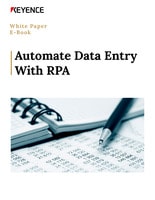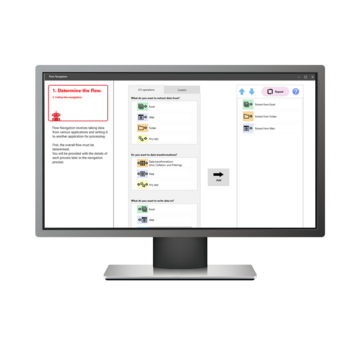RPA (Robotic Process Automation)
3PL Industry Automation with RPA

Third-party logistics (3PL) providers are essential to modern supply chains, offering services like warehousing, order fulfillment, and shipment tracking. With increasing customer expectations for fast, accurate delivery, 3PLs are required to operate with maximum efficiency, while still keeping costs under control. Robotic Process Automation (RPA) helps 3PLs streamline operations, reduce errors, and accelerate key processes like order processing, inventory management, and shipment tracking.
RPA automates repetitive, manual tasks, freeing up resources for more strategic, high-value activities. By integrating RPA into their operations, 3PL providers can improve their service offerings, enhance customer satisfaction, and boost their operational efficiency.
Discover more about this product.
Click here to book your demo.

Common Challenges in 3PL
Manual Order Processing and Fulfillment
Order processing in 3PL operations often involves multiple steps, including capturing order data, updating inventory systems, and coordinating shipment details. Manual processing can lead to delays, mistakes, and inconsistencies in the fulfillment process. RPA can automate these steps, ensuring faster and more accurate processing.
Complex Inventory Management
For 3PL providers managing multiple clients and warehouses, keeping track of inventory across various locations can be a logistical nightmare. RPA can automate inventory tracking, update stock levels in real time, generate alerts for low stock, and even automate reorder processes, improving inventory accuracy and reducing stockouts or overstocking.
Inaccurate or Delayed Shipment Tracking
Delays or inaccuracies in shipment tracking can lead to dissatisfied customers. RPA can monitor shipment progress and provide real-time updates to both customers and internal teams, reducing the risk of delays and improving visibility across the supply chain.
Benefits of RPA for 3PL Providers
- Improved Order Accuracy and Speed: Automating order entry, inventory updates, and invoicing leads to faster, more accurate order processing, minimizing errors and delays.
- Better Inventory Management: Real-time inventory tracking and automated reorder alerts ensure that stock levels are optimized, reducing the likelihood of running out of stock or storing excess inventory.
- Faster Shipment Tracking: RPA can track shipments automatically, providing real-time updates and reducing the manual effort needed to keep customers informed.
- Cost Reduction: By automating manual tasks, 3PL providers can reduce labor costs, minimize errors, and improve overall operational efficiency.
- Scalability: RPA allows 3PLs to scale their operations during busy periods, such as seasonal spikes in demand, without the need for additional staff.
How RPA is Deployed in 3PL Operations
RPA can be used across a variety of 3PL functions to enhance process efficiency and accuracy:
- Order Processing Automation: RPA can automatically capture order data, update inventory systems, validate customer details, generate invoices, and initiate shipment processes. This reduces human intervention and speeds up the entire fulfillment cycle.
- Inventory Management Automation: RPA can be used to track inventory levels, alerting warehouse staff when stock is running low. RPA can also automate the reordering process, ensuring that stock levels are maintained without overstocking.
- Shipment Tracking Automation: RPA can integrate with tracking systems to monitor shipment status and notify customers of delivery updates. By automating this process, RPA ensures timely, accurate updates.
- Invoicing and Billing Automation: RPA can generate invoices based on completed orders and automatically send them to customers. This reduces the time spent on manual invoicing and ensures that billing is accurate and timely.
Integrating RPA with 3PL Systems
RPA can be integrated with the following key 3PL systems:
- Warehouse Management Systems (WMS)
- Transportation Management Systems (TMS)
- Order Management Systems (OMS)
- Customer Relationship Management (CRM) Systems
- Enterprise Resource Planning (ERP) Systems
Integrating RPA with these systems ensures that data flows seamlessly across platforms, improving the speed and accuracy of tasks like order processing, inventory tracking, and shipment monitoring.
Who Benefits the Most?
- Warehouse Managers: Automate inventory updates, stock tracking, and restocking alerts to improve efficiency and reduce human error.
- Order Fulfillment Teams: Streamline order processing and reduce delays by automating manual tasks like data entry and invoicing.
- Customer Service Teams: Enhance the customer experience by providing real-time shipment tracking updates and reducing manual inquiries.
- Operations Managers: Automate and streamline day-to-day operations, freeing up time to focus on strategic tasks and improving overall efficiency.
By implementing RPA, 3PL providers can optimize their operations, reduce costs, and improve the customer experience. RPA helps businesses manage growing order volumes, complex supply chains, and customer expectations while maintaining efficiency and accuracy.
FAQs
How Does RPA Help Improve Order Fulfillment in 3PL?
RPA automates the order-to-cash process, capturing order data, updating inventory systems, generating invoices, and processing shipments. This improves accuracy, speeds up order fulfillment, and reduces delays.
Can RPA Automate Inventory Management in 3PL?
Yes, RPA can track inventory levels, automate stock updates, and generate reorder alerts, ensuring that inventory is always at optimal levels and reducing the risk of stockouts.
How Does RPA Improve Shipment Tracking?
RPA integrates with tracking systems to monitor shipments, providing real-time updates and reducing the manual effort required to keep customers and internal teams informed of delivery status.
We’re here to provide you with more details.
Reach out today!

Related Downloads
Related Products
Scroll




